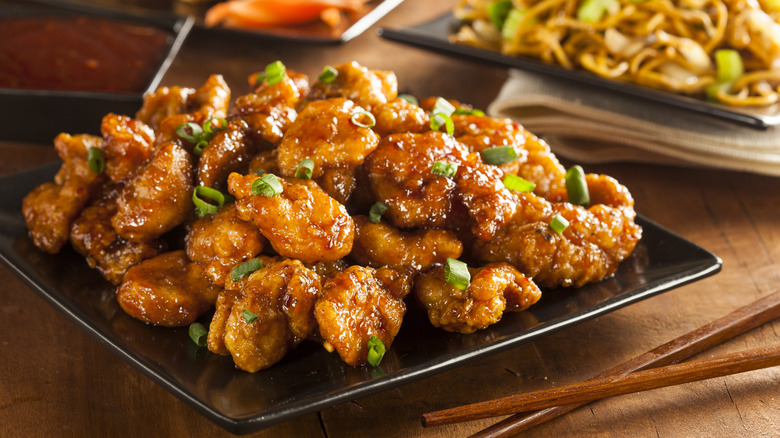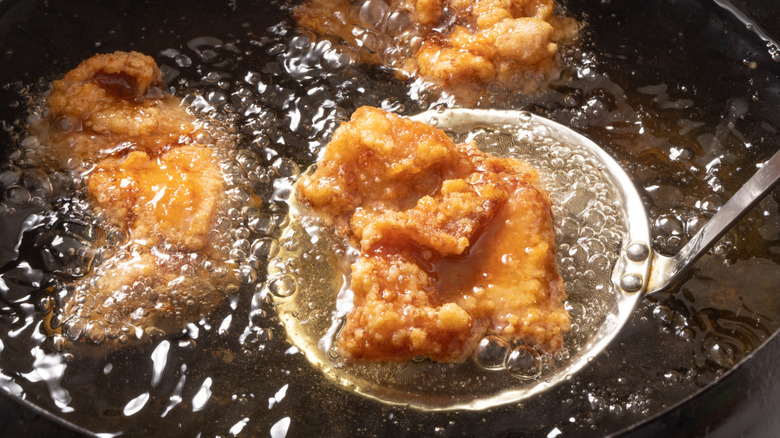How To Make Sure Your Homemade Orange Chicken Stays Crispy
Deep frying is one of those things that most people leave to the pros. Compared to most home-style techniques, it's hard to get the texture just right, messy, and can be dangerous.
But mastery over the deep-fat fryer is key to many beloved dishes, like orange chicken. Invented by Panda Express's executive chef Andy Kao, the Chinese-American classic features pieces of deep-fried chicken tossed in a sweet and sour sauce. Like other Chinese-American favorites, like General Tso's chicken, orange chicken performs a magic feat. The battered outer layer stays crisp, even after the chicken has been doused with sticky sauce.
For advice on getting the chicken just right, we turned to classically-trained Cantonese chef Kenny Leung. Raised in Guǎngzhōu, China, Leung's career dates back to age 15. He apprenticed at Canton Culinary School before landing a job at the White Swan Hotel and Restaurant, the first restaurant in Guǎngzhōu to earn a Michelin star. Now, Leung works as Executive Chef at New York City's YAO restaurant. The restaurant's Instagram, @yaorestaurant, showcases Leung's international take on Cantonese cuisine.
While orange chicken is part of the Chinese-American tradition, distinct from traditional Chinese cuisine, it still draws inspiration from Chinese techniques. Leung gave us the low-down on his go-to method for crisp chicken. "I recommend using eggs, cornstarch, and potato starch to coat [the chicken pieces] and then double frying them," he explained. The ingredients — combined with the double frying technique — will give the chicken its signature crunch.
Why double frying keeps things crispy
Double frying involves, well, frying food twice. It's what gives Korean chicken its signature crunch, and it's key to the perfect french fries, too. To double fry, deep fry food at a low temperature, until the outer layer is just barely crisp. Then let it rest. Once it's had a chance to cool, fry it again — this time at a hotter temperature — until it's perfectly brown.
Eggs, cornstarch, and potato starch are manageable, but do you really have to double fry? Deep frying is already a feat. Why go through the process all over again?
It's science. That first low-temperature fry cooks the food through and pulls water to the surface. As the food cools between each fry, the water evaporates. The second fry removes the rest of the water. If you simply kept the chicken in the oil until all the water evaporated, it would be dry and overcooked. Double frying gives the water a chance to thoroughly evaporate without leaving the chicken in the hot oil for too long. Sure, it's a hassle, but it means your homemade leftovers will stay crunchy after a day in the fridge — just like the food from your favorite takeout spot.

